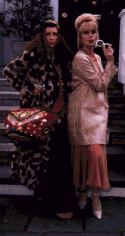
Students bring their unique personality and writing history to the surface when entering a classroom. Not only do they bring their particular religion, gender, family, and ethnicity experiences to the classroom, but they tote their past writing performances with them. "These contribute to the rich texture of possibilities for writing, thinking, and for negotiating personal identity. They also contribute to the confusion and anxiety many students experience." (Ritchie 157)
Although some similarities will exist among students' writing responses, a person's individual history and experiences cause them to write in different ways. Each student, and therefore, their voice, has its own tones, accents, values, influences, idioms, meanings, and voices.
Arthur Applebee's study, Contexts for Learning to Write, demonstrates that the chief function of writing in schools is seldom heuristic and is usually evaluative, to test mastery of subject matter or conformity to institutional rules. Students then leave school conceiving of writing as an act of retrieving a fixed body of information and putting it into a correct form to meet the requirements of the teacher and institution. (Ritchie 159)
The art of voice in a paper has not, therefore, been learned, repeated, or mastered.
It is only when writers begin to, "struggle with the words of others with their own intentions do writers progress beyond the level of functionary or bureaucracy to develop their own style and voice." (Ritchie 161) The Ab Fab superficiality and forgetfulness fades away as the writer's real voice begins to emerge.
Even when writers begin to grapple with voice, many have a hard time, as Maureen O'Leary said, "to know what it means to write a page that 'comes out of you' and sounds like you." (O'Leary 1) O'Leary noted that students oftentimes feel as if their voice is fixed, in a "this is just the way I am" attitude. They are unwilling to explore or improve personal voice. Instead, "they are convinced that their voices, like their looks, are a given -- immutable, unchangeable." (O'Leary 2) Think the Ab Fab women would never wear anything but Chanel, Dior, Lacroix, or any other designer label. When students' real voices materialize, they present themselves boldly and bravely in papers.
